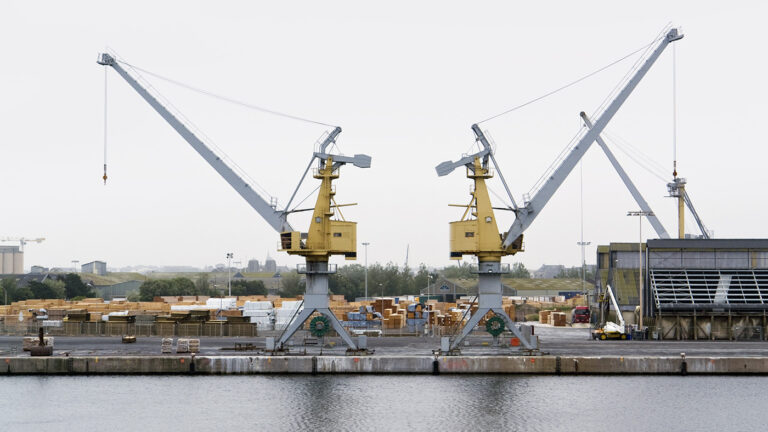Financial Leaders are building predictive models and scenario analysis capabilities to sense the impact of the volatile environment. By leaning into more agile, data-driven scenario planning, they can model the potential effects of market risks. CFOs also could play an active role in driving business growth.
River Logic helps Finance Leaders to achieve 5 goals through end-to-end financial optimization.
|
Improve Forecast Accuracy and Risk Resiliency. |
Drive Profitable Growth in Leaner Times |
Deliver Value through Margin Transformation |
Increase Capital Efficiency. |
Act on ESG |
1. Improve Forecast Accuracy and Risk Resiliency.
Given rising interest rates and unpredictable costs, finance leaders are seeking safe options for more flexibility in operations. Holding excess cash is critical to enabling organic growth investments in this context. Finance leaders need reliable tools for Forecast Accuracy to improve Cash Flow position. The ability to estimate with precision how a business will perform in the future should be powered by technology that includes not only complete financials but also all the interdependencies of the end-to-end value chain, adaptable to a company’s unique constraints for a more robust and realistic assessment and forecast.
A truly end-to-end scope would include not only the full value chain but also the product portfolio, sustainability objectives, and the financial impact of profitability and ability to finance the operation. Understanding transfer prices, taxes, tariffs, and offsets are critical for end-to-end optimization and determining any initiative’s real financial impact.
River Logic’s Digital Planning TwinTM enables profit improvement, from cost transformation to margin-based optimization, to identify cost savings without sacrificing profit, and creates a GAAP-compliant ROI roadmap that aligns with the client’s operational and financial leadership.
2. Drive Profitable Growth in Leaner Times
Strategic decisions require a process that combines the ability to analyze complex variables and evaluate scenarios for data-driven decision-making. In the current environment, CFOs must lead strategic discussions and drive business agility through collaboration with other leaders as COOs, CSCOs, or CROs to create new pricing structures, streamline supplier relationships, identify supply chain improvements to drive revenue, and quantify areas of risk across the enterprise.
River Logic’s Digital Planning TwinTM is an advanced platform that provides an easy and fast way to visualize and interact with a company’s value chain. It helps solve complex, cross-functional decisions to optimize key objectives like growth.
Key decisions:
|
Growth. Organic or Inorganic? Funding Organic Growth: Assess capital utilization to support organic growth and find growth opportunities to provide better returns. Identify less risky and less expensive sources of funding. Mergers and Acquisitions: Evaluate M&A strategies to achieve specific goals, including what pieces of the value chain the firm owns versus engaging with 3rd parties, which drives into uses of cash, the business model, and how the firm can grow. |
Product and Customer Profitability Develop a structured approach to understand the financial impact of serving customers, determine the contribution margin, include the financial drivers as a primary variable in the analysis, and understand opportunities based on service capacity. Portfolio Optimization: Identify the right mix of products the company should manage based on Product Profitability and Capacity Considerations. Cost to Serve: Understand the financial impact of serving customers; determine the margin of contribution; includes financial drivers as a primary variable in the analysis; and understand opportunities based on service capacity. Service Level Strategy: Determine optimal inventory position and service levels given network and inventory conditions. Define an appropriate service level and how quickly you can satisfy your customers in line with keeping your costs in check. |
3. Deliver Value through Margin Transformation
Margin Transformation delivers significantly higher value than Cost Optimization, while providing real insights into a company’s key performance drivers. Cost Optimization is a blunt tool, often causing more damage than benefits and never reaching the optimal state. It requires more than Cost Optimization Initiatives to address disruption and thrive in volatile environments.
As we head into a recessionary period, firms that manage margin and balance sheet items deliver up to 50% higher shareholder returns. Finance leaders have a unique opportunity to drive Margin Transformation.
A truly end-to-end scope would include not only the entire value chain but also the product portfolio, sustainability objectives, and the financial impact of profitability, margin, and ability to finance the operation.
Understanding demand at a deeper level, as well as transfer prices and financial constraints, are critical for end-to-end optimization to quantify and maximize any initiative’s real financial impact and drive Margin Transformation.
Typical Value from Margin Transformation:
|
Up to 20% Higher Company NPV |
5-10 Higher MARGIN POINTS |
Up to 50% higher SHAREHOLDERS RETURNS |
4. Increase Capital Efficiency
Gain flexibility for growth investments by fine-tuning the capital allocation strategy to address changing conditions in the cost of capital and asset valuations.
River Logic’s Digital Planning TwinTM helps decision makers in finance to conduct “What If Scenarios” to model how investment choices will impact business objectives. Some scenarios include:
- Identify investments with higher returns and strategic alignment given organizational constraints.
- Trade-offs between CAPEX/OPEX.
- Transfer Price Optimization
- NVP Analysis and Configuration
- Manage capital allocation across all levels of the organization (BU/regional/corporate)
- Risk and Return assessments of capital projects and portfolios.
5. Act on ESG
Many companies are concentrating their ESG efforts on gathering data and creating consistent reporting metrics in preparation for SEC’s forthcoming disclosure rules. Financial leaders can take an active role in shaping policies and procedures for climate data collection. Still, they can also look to drive execution in how their companies can make progress on decarbonization efforts.
River Logic helps business leaders in every stage of their sustainability journey, both in setting the target and driving execution companies need to tie into scopes 1, 2, and 3.
|
Target Definitions & Regulatory Compliance
|
Driving Execution
|
Innovation projects around sustainability
|
Click here to discover how River Logic’s Value Chain Optimization is the only comprehensive solution designed to drive long-term profitability and achieve corporate goals.



